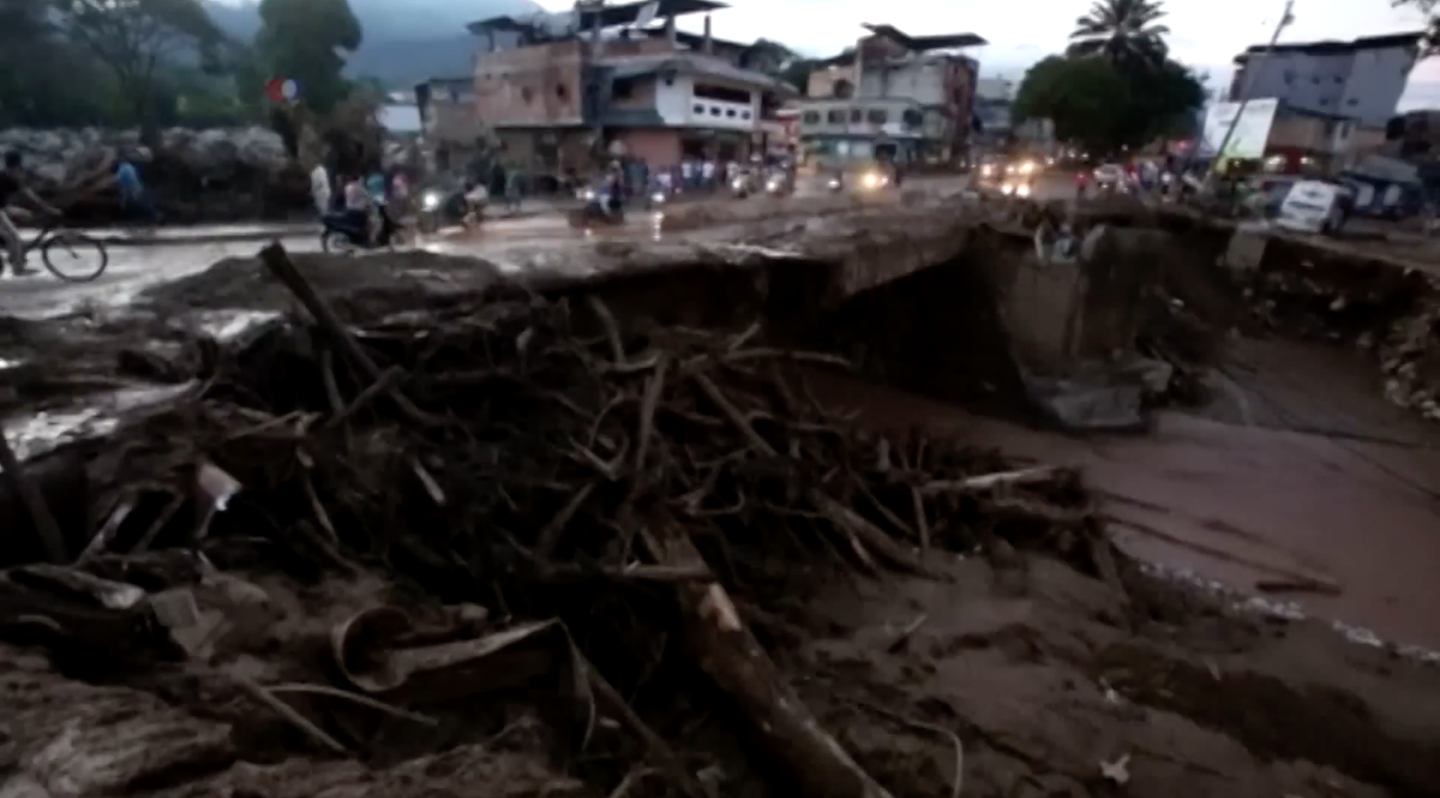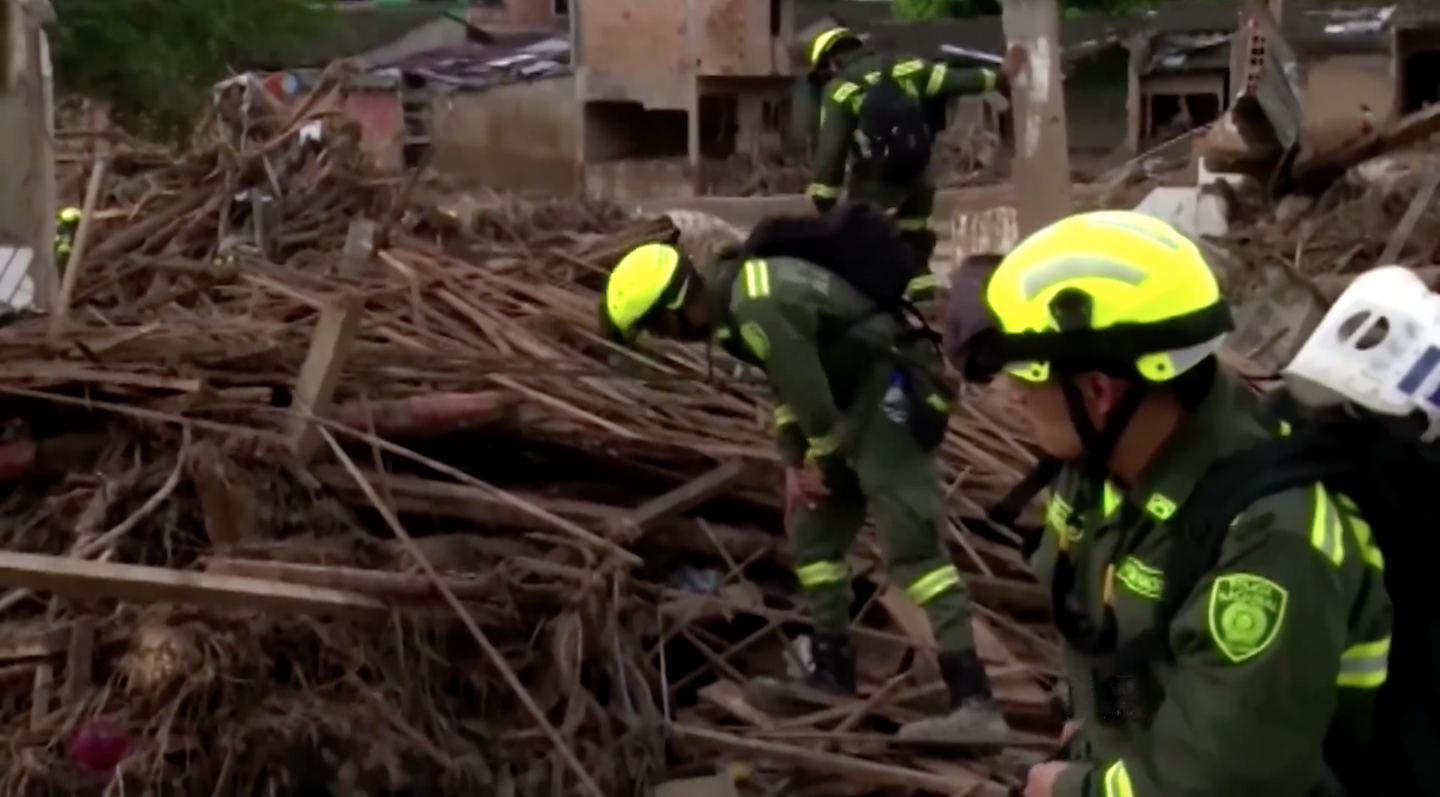2017 Mocoa Landslide on:
[Wikipedia]
[Google]
[Amazon]
The Mocoa landslide was a natural disaster that took place in 2017. During the pre-dawn hours of 1 April 2017, locally heavy rain triggered flash flooding and landslides in the city of Mocoa, Putumayo, Colombia, killing at least 336 people, injuring 400, and leaving 200 others missing. It is the third-deadliest weather-related disaster in Colombian history, and is regarded as the worst catastrophe in the history of Mocoa.
 On 31 March 2017, moist tropical air from the Atlantic Ocean flowed west across the
On 31 March 2017, moist tropical air from the Atlantic Ocean flowed west across the

Background
Situated in theAndes
The Andes, Andes Mountains or Andean Mountains (; ) are the longest continental mountain range in the world, forming a continuous highland along the western edge of South America. The range is long, wide (widest between 18°S – 20°S ...
, the department of Putumayo is notorious for deadly landslides. The region's mountainous terrain and frequent rainfall makes it prone to such disasters. Much the same as the Himalayas, the Andean mountains in this region have ultra steep drops, from over within , with that kind of drop, heavy rains tend to take boulders at high speeds along with them (locally called ''huayco
A huaico or huayco (from the Quechua ''wayqu'', meaning "depth, valley") is an Andean term for the mudslide and flash flood caused by torrential rains occurring high in the mountains, especially during the weather phenomenon known as ''El Niño''.
...
s''), not just water. Throughout much of the first three months of 2017, the northwestern coast of South America saw above-average rainfall, leading to deadly floods in Peru and Ecuador. The rainy season in Colombia typically begins in mid-March and continues through mid-June. March 2017 proved unusually wet, with areas around Mocoa receiving 150 percent the average monthly rainfall.
Disaster
 On 31 March 2017, moist tropical air from the Atlantic Ocean flowed west across the
On 31 March 2017, moist tropical air from the Atlantic Ocean flowed west across the Amazon
Amazon most often refers to:
* Amazons, a tribe of female warriors in Greek mythology
* Amazon rainforest, a rainforest covering most of the Amazon basin
* Amazon River, in South America
* Amazon (company), an American multinational technolog ...
toward the Andes. A broad swath of ample precipitable water Precipitable water is the depth of water in a column of the atmosphere, if all the water in that column were precipitated as rain. As a depth, the precipitable water is measured in millimeters or inches. Often abbreviated as "TPW", for Total Preci ...
, or atmospheric moisture, extended across this region. During the evening hours, a slow-moving mesoscale convective complex
A mesoscale convective complex (MCC) is a unique kind of mesoscale convective system which is defined by characteristics observed in infrared satellite imagery. They are long-lived, often form nocturnally, and commonly contain heavy rainfall, w ...
developed within this region and produced heavy rainfall in southern Colombia. Infrared satellite imagery from GOES-13 depicted cloud tops of , indicating the storms were capable of producing torrential rain. With the system moving perpendicular to tall mountains, orographic influence likely enhanced rainfall and further contributed to the subsequent disaster. According to residents, the rain became particularly intense between 11:00 p.m. and 1 a.m. local time. A total of of rain fell during the event, largely within a few hours. This caused the Mocoa, Sangoyaco and Mulato
(, ) is a racial classification to refer to people of mixed African and European ancestry. Its use is considered outdated and offensive in several languages, including English and Dutch, whereas in languages such as Spanish and Portuguese ...
rivers to overflow and send mudflow
A mudflow or mud flow is a form of mass wasting involving fast-moving flow of debris that has become liquified by the addition of water. Such flows can move at speeds ranging from 3 meters/minute to 5 meters/second. Mudflows contain a significa ...
s towards residences and infrastructure in the city of Mocoa by 3:00 a.m.
Neighborhoods built along the banks of the aforementioned rivers were completely devastated. Numerous poorly constructed homes were leveled, and large portions of the city were left buried in several feet of mud. The disaster adversely affected 17 of the city's neighborhoods, with the mayor of Mocoa, José Antonio Castro, stating some areas " adbasically been erased". The Independencia neighborhood was entirely destroyed. Approximately 45,000 people were directly affected throughout the city.
At least 329 people are known to have died in the disaster. An additional 332 were injured and a further 70 were missing. At least 22 of the injured were in a "delicate health situation" and transferred to Neiva
Neiva () is the capital of the Department of Huila. It is located in the valley of the Magdalena River in south central Colombia with a population of about 357,392 inhabitants. It is one of the most important cities in southern Colombia, mainly ...
. Another 21 victims were flown to Popayán
Popayán () is the capital of the Colombian department of Cauca. It is located in southwestern Colombia between the Western Mountain Range and Central Mountain Range. It has a population of 318,059 people, an area of 483 km2, is located ...
.
Aftermath

President
President most commonly refers to:
*President (corporate title)
* President (education), a leader of a college or university
*President (government title)
President may also refer to:
Automobiles
* Nissan President, a 1966–2010 Japanese f ...
Juan Manuel Santos
Juan Manuel Santos Calderón (; born 10 August 1951) is a Colombian politician who was the President of Colombia from 2010 to 2018. He was the sole recipient of the 2016 Nobel Peace Prize.
An economist by profession and a journalist by trade, ...
declared a state of emergency
A state of emergency is a situation in which a government is empowered to be able to put through policies that it would normally not be permitted to do, for the safety and protection of its citizens. A government can declare such a state du ...
and stated that his "heart and the hearts of all Colombians are with the victims of this tragedy." More than 1,100 soldiers and police officers deployed to assist in search and rescue efforts. Santos labeled the incident "a disaster caused by nature, by climate change." A temporary morgue was established to handle the large number of deceased. The Colombian Red Cross
The Colombian Red Cross is a Colombian-based nonprofit private entity member of the International Red Cross and Red Crescent Society. It has been a member since 1922. The Colombian Red Cross embraces the principles of the International Red Cros ...
activated its National Crisis Room in response to the disaster and deployed a team of 47 people to assist in recovery. Hospitals in the city were overwhelmed with the influx of patients, and much of the area was left without power and water.
By 2 April, more than 2,500 personnel — including 1,400 soldiers and 800 police officers — were scouring debris for survivors. The army provided 63 vehicles, 10 helicopters, 7 boats, and 6 planes for the rescue operation. Médecins Sans Frontières
(MSF; pronounced ), also known as Doctors Without Borders, is a humanitarian medical non-governmental organisation (NGO) or charity of French origin known for its projects in conflict zones and in countries affected by endemic diseases. ...
deployed an assessment team to the affected area on 2 April.
Around 400 members of the rebel group Revolutionary Armed Forces of Colombia
The Revolutionary Armed Forces of Colombia – People's Army ( es, link=no, Fuerzas Armadas Revolucionarias de ColombiaEjército del Pueblo, FARC–EP or FARC) is a Marxist–Leninist guerrilla group involved in the continuing Colombian confl ...
offered to help rebuild Mocoa, but required approval from the government of Colombia
The Government of Colombia is a republic with separation of powers into executive, judicial and legislative branches.
Its legislature has a congress,
its judiciary has a supreme court, and
its executive branch has a president.
The citi ...
to do so.
See also
* * * *References
{{DEFAULTSORT:Mocoa landslide, 2017 2017 in Colombia April 2017 events in South America landslides in 2017 landslides in Colombia natural disasters in Colombia Putumayo Department